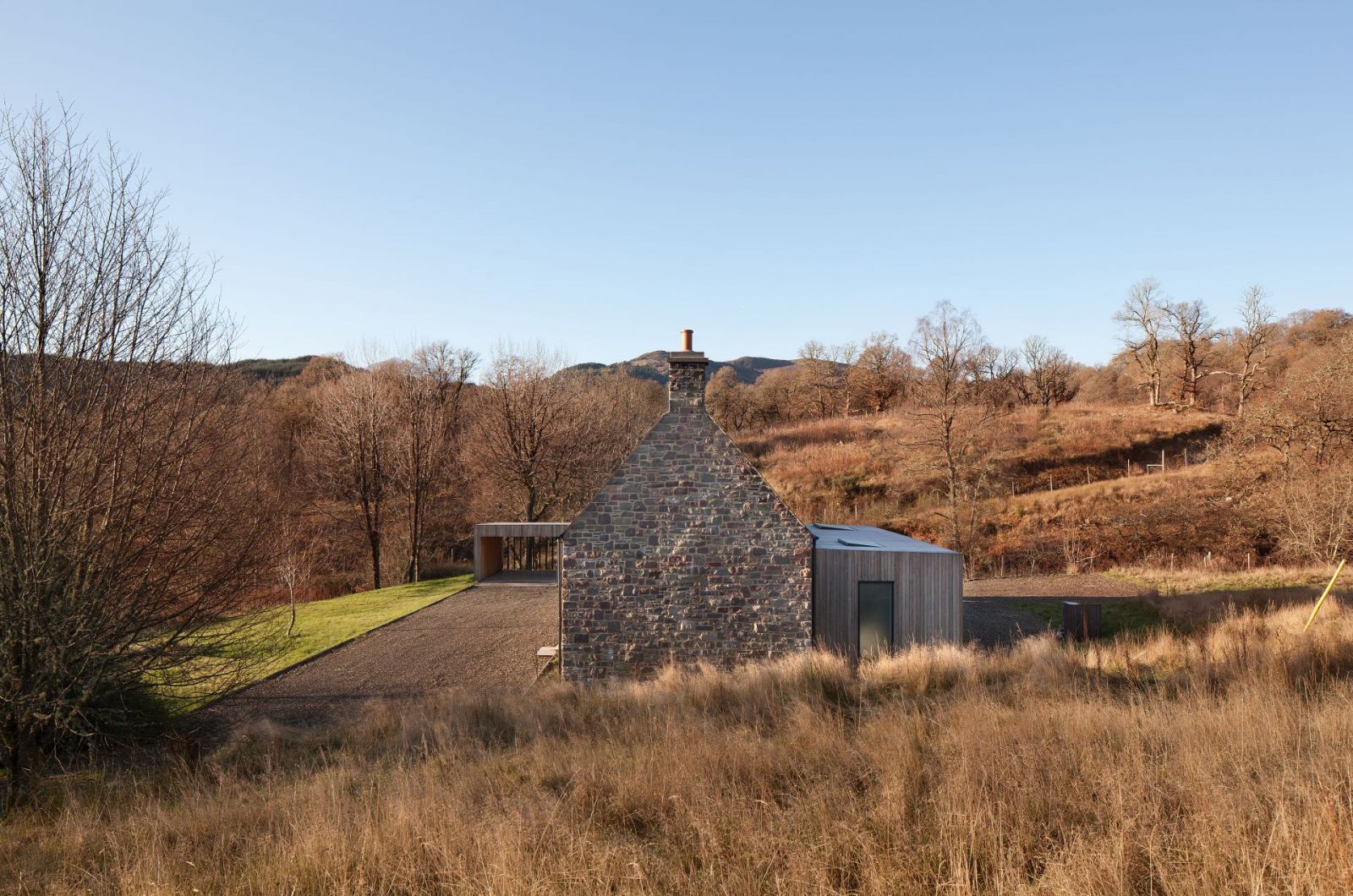Sustainable Materials: A Deep Dive into Eco-Friendly Building Practices
In modern architecture, the concept of sustainability isn't just a trend or personal choice. It is now essential to ensure a better environment for our own and our children’s future.
Architects and designers are increasingly turning to innovative, sustainable materials to shape a future where structures not only harmonise with the environment but actively contribute to its well-being.
At the forefront of this movement is Dualchas Architects, where the pursuit of sustainable building practices is not just a passion but a deeply ingrained ethos.
In this blog, we'll explore the world of sustainable materials and uncover the latest advancements that are reshaping architectural landscapes.
From ingenious use of recycled materials to cutting-edge technologies, each material employed by Dualchas is a testament to our unwavering commitment to eco-friendly construction.
Understanding sustainable materials in construction
When it comes to environmental concerns, the construction sector is surely not new to the conversation. According to this study by Vasilca et al. published in 2021, the construction industry is responsible for about 50% of carbon emissions, 20% to 50% of consumption of natural resources, and 50% of total solid waste.
With the urgency towards environmental awareness, sustainable architecture rises to be one of the ways we can do to minimise our impact on the planet. And its revolution is as crucial now as it has ever been.
Sustainable architecture highlights the responsible use of resources when constructing buildings. It takes into account the materials that will be used, how they will impact the environment, and their risks on people’s safety.
These environmentally friendly materials (also known as green building materials) have low environmental impact in terms of production, placing, and maintenance. They must be durable, reusable or recyclable, and natural to ensure its sustainability for years to come.

Kinlochard Cottage project by Dualchas
The environmental impact of traditional vs. sustainable materials
The choice of materials to use in construction is crucial to create a functional and eco-friendly building. Traditional construction materials, while serving their purpose, often come with severe environmental impact.
On the other hand, sustainable materials are a great alternative to these harmful materials, offering a pathway to a greener future.
Traditional materials
Commonplace materials like concrete, steel, and virgin timber have long been the foundation in construction. However, their extraction and production processes are highly impactful.
Concrete production, for instance, accounts for a significant portion of global carbon emissions. The mining of virgin timber and its subsequent processing contribute to deforestation and habitat destruction.
Moreover, traditional materials often carry a substantial carbon footprint, involving the entire lifecycle from extraction to transportation and eventual disposal. The energy-intensive processes involved in their production further increases their environmental impact.
It's significant to recognise that the consequences of these choices go beyond the construction site.
Sustainable materials
In contrast, sustainable materials are sourced and manufactured with environmental preservation in mind. Recycled and upcycled materials reduce the demand for raw resources and divert waste from landfills.
Bio-based materials harness the regenerative power of nature, ensuring that their production leaves a minimal ecological footprint.
Additionally, sustainable materials are far more efficient and durable compared to their traditional counterparts. They are designed to stand for years, reducing the need for frequent replacements and repairs.
This not only conserves resources in the long run but also minimises the environmental impact associated with maintenance.
At Dualchas, we champion a holistic approach to sustainable architecture. It’s embedded in our ethos to ensure that each material choice aligns with our unwavering commitment to environmental responsibility.
Popular eco-friendly materials in modern architecture
With the rise of sustainable architectural solutions, many innovative materials have also emerged to reshape the landscape of modern construction.
These eco-conscious alternatives not only exhibit impressive structural integrity but also align harmoniously with the environment.
Let's delve into some of the standout options that are redefining the possibilities of sustainable architecture:
Bendable concrete
This groundbreaking material offers a malleability previously unseen in the realm of concrete. Through meticulous engineering, it possesses the ability to flex and adapt, opening up multiple possibilities for architectural design.
Its potential applications range from curved façades to seismic-resistant structures, showcasing a remarkable fusion of form and function.
Mass timber
Due to its versatility, mass timber is revolutionising the construction industry. Comprising engineered wood products like cross-laminated timber (CLT) and glued laminated timber (Glulam), this material boasts exceptional strength-to-weight ratios.
Its sustainable sourcing and precision engineering make it a compelling choice for multi-storey buildings to embody a synergy between natural elements and contemporary design.
Salvage materials
Salvage materials encapsulate the ethos of sustainable reuse. From weathered bricks to aged timber, these artifacts have a history that enriches the narrative of a structure.
Incorporating salvage materials not only diminishes the demand for new resources but also creates a distinctive character on the architectural composition.
Bamboo
Nature's own marvel, bamboo, is the perfect model of sustainable construction. With its rapid growth rate and impressive tensile strength, bamboo lends itself seamlessly to a myriad of architectural applications.
From structural frameworks to surface finishes, its versatility and renewability make it a cornerstone of eco-conscious, low-impact design.
Mycelium
Harnessing the natural prowess of fungi, mycelium-based materials are bringing new era of biodegradable construction. Comprising fungal networks, these materials possess remarkable structural qualities.
They can be employed in insulation, packaging, and even as a foundation for furniture, offering a glimpse into the regenerative potential of architecture.

Carnoch Church renovation by Dualchas
The economic benefits of using sustainable materials
The choice of materials plays a significant role on the overall cost, longevity, and environmental impact of a project. Opting for sustainable materials isn't merely an ecological choice; it's also a savvy economic decision.
Here's a closer look at how investing in sustainable materials can yield substantial economic advantages.
Long-term cost efficiency
While the upfront cost of some sustainable materials may be slightly higher, their long-term benefits far outweigh the initial expense. Materials like recycled steel, for example, exhibit exceptional durability and require minimal maintenance over their lifespan.
This longevity translates into reduced replacement and repair costs, ultimately yielding substantial savings in the long run.
Energy efficiency
Sustainable materials often contribute to the energy efficiency of a structure. For instance, the superior insulation properties of materials like rammed earth and hempcrete can lead to reduced energy consumption for heating and cooling.
This translates into lower utility bills, providing ongoing cost savings for building occupants.
Local sourcing and reduced transportation costs
Opting for locally sourced sustainable materials not only supports local economies but also minimises the environmental impact associated with transportation.
By reducing the distance materials need to travel, architects can mitigate transportation costs, decrease emissions, and contribute to the resilience of regional supply chains.
Incentives and certifications
Many regions offer incentives, tax credits, and certifications for projects that incorporate sustainable materials. These incentives can significantly offset initial material costs, making sustainable choices even more economically viable.
Additionally, achieving certifications like LEED (Leadership in Energy and Environmental Design) can enhance a building's market value and attract environmentally conscious tenants or buyers.
Reduced waste management costs
Sustainable materials often generate less waste during both production and construction phases. For instance, using salvaged wood or bamboo can substantially reduce the amount of material that ends up in landfills.
This reduction in waste management costs not only aligns with sustainable practices but also contributes to overall project cost efficiency.
Pioneering the future with sustainable materials
The role of sustainable materials is undeniably pivotal in architectural evolution. By delving into the realm of eco-friendly building practices, we discover innovative solutions that not only redefine construction but also foster a deeper connection to our planet.
At Dualchas Architects, we recognise the profound impact that materials have on the environment and the built world. That's why we stand at the forefront of this paradigm shift, passionately championing the use of sustainable materials in every project we undertake.
As you embark on your architectural journey, consider Dualchas as your trusted partner. Together, we can transform your design dreams into reality, and highlight the message of sustainability.
Let us build a world where architecture not only shelters, but also nurtures and uplifts, creating spaces that stand as testaments to the power of responsible design.
